2022国际计算智能最新进展会议受邀专家
此次会议目前共邀请到计算智能领域专家24人,其中院士21人
专家 (按报告顺序排序) | 姓名 | 职称/职务 | 工作单位 | 报告标题 | 备注 |
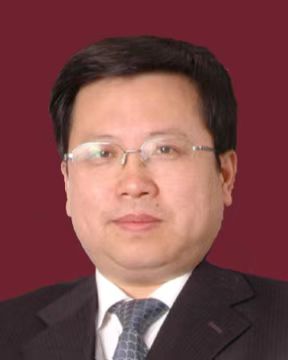
| 唐立新
| 中国工程院院士、东北大学副校长、智能工业数据解析与优化教育部重点实验室主任,工业人工智能与大数据科学中心主任 | 东北大学 | Data Analytics and Optimization for Smart Industry |
|
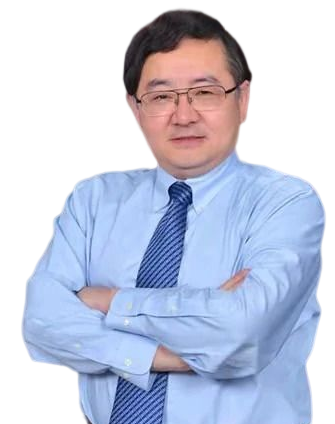
| 蒋昌俊 | 中国工程院院士、英国工程技术学会(IET)会士、布鲁内尔大学名誉教授 | 同济大学 | 数字经济发展的挑战与思考 |
|
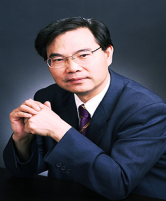
| 徐宗本 | 中国科学院院士 | 西安交通大学(中国) | How to break through the a priori assumptions of machine learning? |
|

| 宋永端 | IEEE 会士、国际欧亚科学院院士、注册职业工程师(美国)、中国自动化学院常务理事 | 重庆大学(中国) | 非线性系统事件触发控制最新进展及趋势 |
|

| Marco Dorigo | 蚁群优化创始人、欧洲科学院院士、IEEE会士、Swarm Intelligence创刊主编 | 布鲁塞尔自由大学(比利时) | Self-Organized Nervous Systems for Robot Swarms |
|
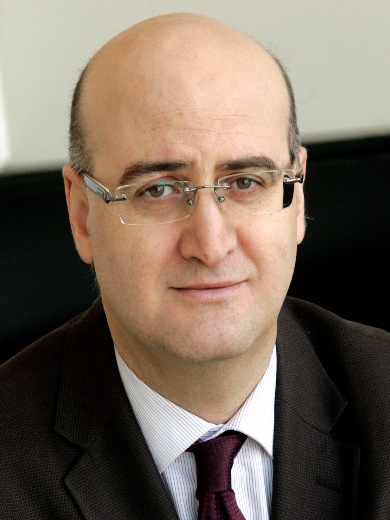
| Moncef Gabbouj | IEEE会士,IEEE傅立叶奖和哈利-古德奖院士,欧洲科学院院士,亚太人工智能协会院士
芬兰国家科学基金会IUCRC视觉和决策信息学中心(CVDI)站点主任 | 坦佩雷大学(芬兰) | The Super Neuron Model – A new generation of ANN-based Machine Learning and Applications |
|
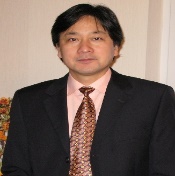
| 金耀初 |
亚历山大-冯-洪堡人工智能教授、 欧洲科学院院士、IEEE会士 《Complex & Intelligent Systems》主编
| 比勒费尔德大学(德国) | Secure and Privacy-Preserving Data-Driven Evolutionary Optimization
|
|
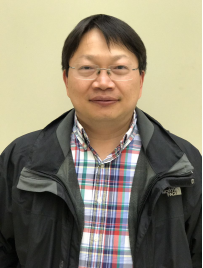
| 杨圣祥
|
IEEE高级会员、IEEE进化计算期刊的副编辑、电气和电子工程师学会控制论和信息科学期刊的副编辑、英国德蒙福特大学人工智能研究所副所长 | 德蒙福特大学(英国) | 进化计算求解动态多目标优化问题 |
|
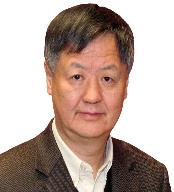
| 王钧 | 欧洲科学院外籍院士、IEEE会士 | 香港城市大学 | Advances in Collaborative Neurodynamic Optimization |
|
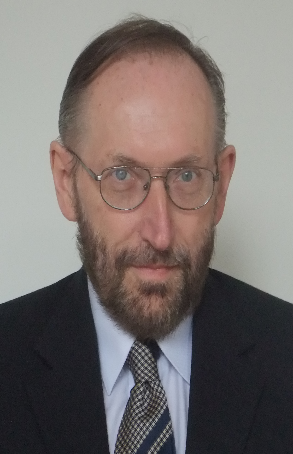
| Witold Pedrycz | 加拿大皇家科学院院士、波兰科学院外籍院士、IEEE会士、Information Sciences主编 | 阿尔伯塔大学(加拿大) | Society-Oriented Developments of Machine Learning: Challenges and Opportunities |
|
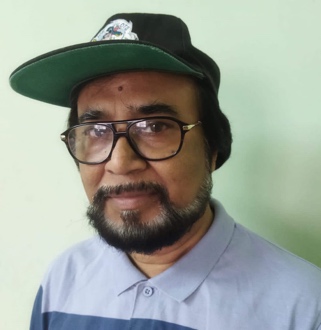
| Nikhil R. Pal | 印度国家工程院、印度国家科学院、印度国家科学院院士、IEEE会士 | 印度统计研究所(印度) | AI for all: Before we are ready can there be a winter? |
|
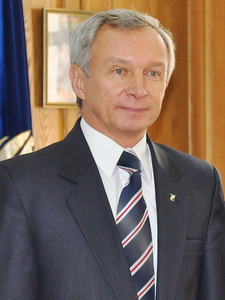
| Sergey Ablameyko | 白俄罗斯科学院院士、欧洲科学院院士、IAPR会士 | 白俄罗斯国立大学(白俄罗斯) | Image Analysis and Diagnosis by Artificial intelligence: technical and legal questions |
|
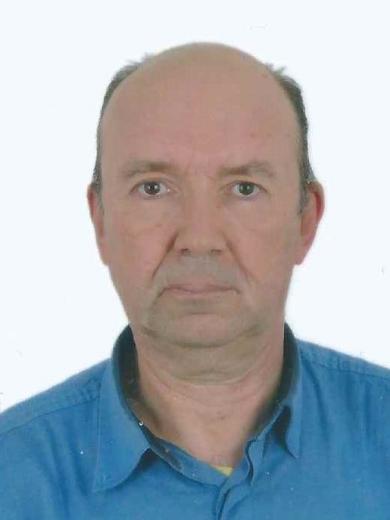
| A. Murat Tekalp
| 教授、土耳其科学院院士、欧洲科学院院士、IEEE会士 | 科奇大学(土耳其) | State-of-the-art in Learned Video Compression |
|
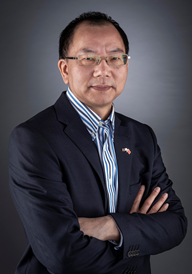
| Tingwen Huang | 发展中国家科学院院士、欧洲科学与艺术学院院士、IEEE会士、AAIA会士、国家高层次人才特殊支持计划入选者 卡塔尔Doha | 德州农工大学卡塔尔分校(卡塔尔) | 耦合反应扩散神经网络动力学 |
|
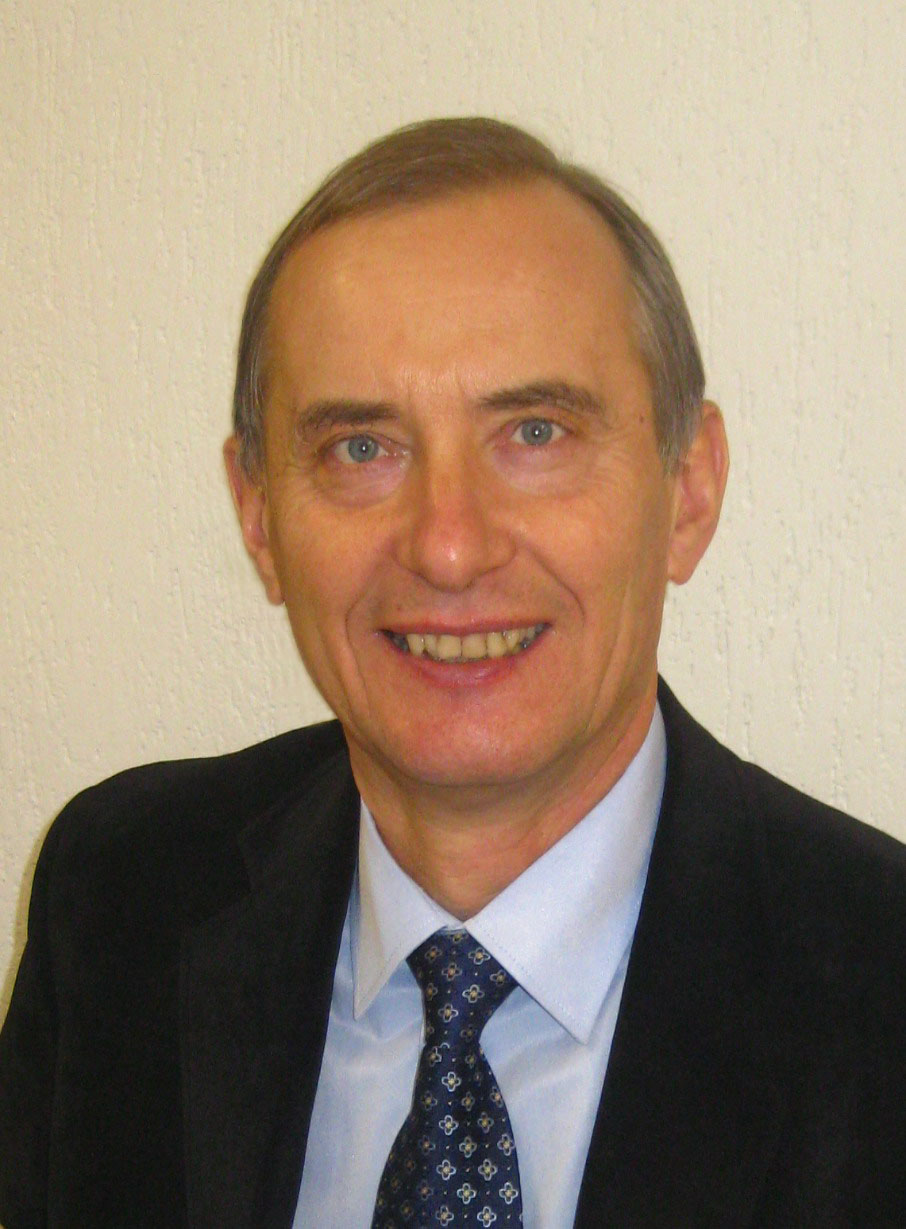
| Leszek Rutkowski | 波兰科学院院士、IEEE会士、Journal of Artificial Intelligence and Soft Computing Research主编 | 波兰科学院系统研究所(波兰)
| Stream Data Mining: From Sliding Windows to Deep Learning |
|
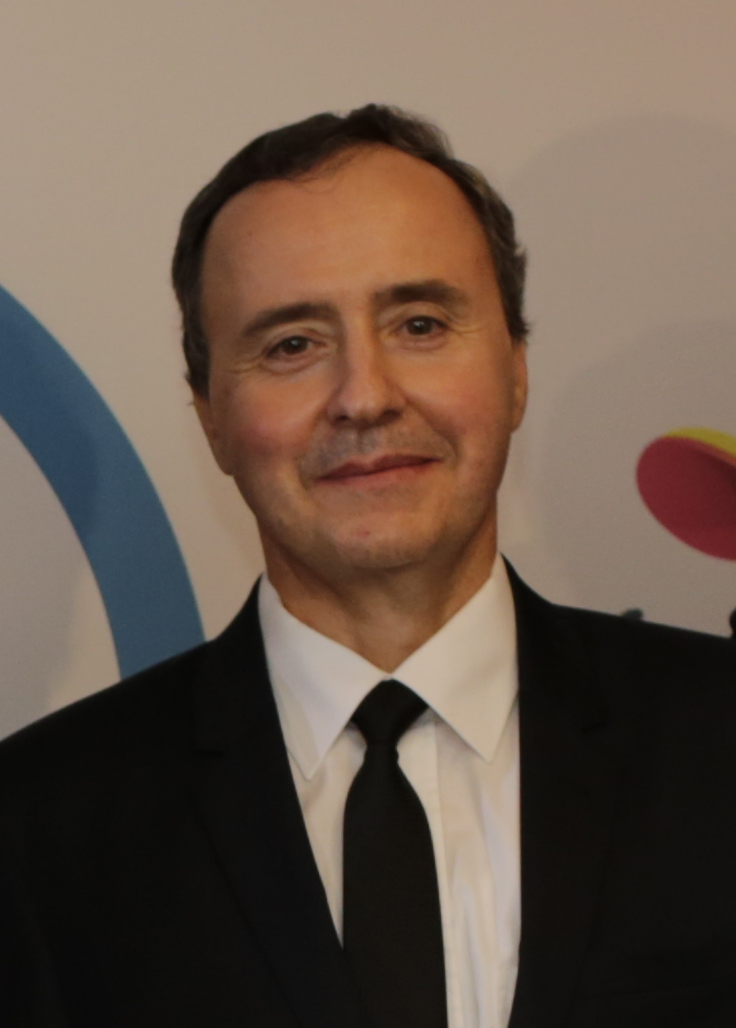
| Radu-Emil Precup | 罗马尼亚科学院通讯院士、International Journal of Artificial Intelligence主编 | 蒂米什瓦拉理工大学(罗马尼亚) | Nature-inspired optimization algorithms applied to fuzzy control, fuzzy modeling and mobile robot navigation |
|
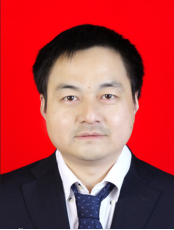
| 曾志刚 | IEEE会士、亚太地区神经网络学会理事长、IEEE武汉分会计算智能学会分会主席 | 华中科技大学 (中国) | Analysis of multisensory interconnected mental memory circuits |
|
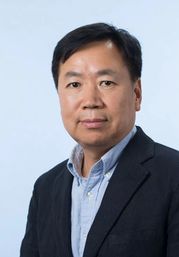 
| 候增广 | 国家杰出青年基金获得者,万人计划入选者,IEEE/CAA Fellow、中国自动化学会副理事长、亚太神经网络国际学会副主席、国际神经网络学会理事、IEEE Transactions on Cybernetics、IEEE SMC Magazine、Neural Networks等期刊编委
| 中国科学院自动化研究所 | 机器人面临的智能挑战 |
|
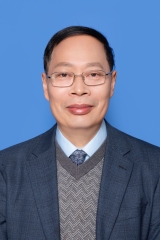
| 曹进德 | 俄罗斯科学院院士、欧洲科学院院士、俄罗斯工程院院士、非洲科学院院士、欧洲科学与艺术学院院士、巴基斯坦科学院院士、IEEE会士 | 东南大学 | 群智网络系统及其应用 |
|

| Thomas Bäck | 荷兰皇家艺术与科学院(KNAW)院士、IEEE会士、欧洲科学院院士 | 莱顿大学(荷兰) | Automated Configuration Meets Evolutionary Algorithms |
|

| Marios Polycarpou |
IEEE 会士,IFAC 会士、KIOS卓越研究和创新中心主任、 塞浦路斯科学、文学和艺术院院士
| 塞浦路斯大学(塞浦路斯共和国) | Distributed Fault Diagnosis of Interconnected Cyber-Physical Systems
|
|

| Pedro Larrañaga | 欧洲科学院院士、欧洲人工智能协会会士 | 马德里理工大学(西班牙) | Estimation of Distribution Algorithms in Machine Learning |
|
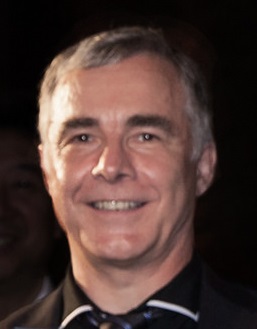
| Hervé Panetto | 教授、欧洲科学院院士、AAIA会士 | 洛林大学 (法国) | Cognitive Interoperability in Cyber-Physical Enterprises, a Computing Intelligence perspective |
|
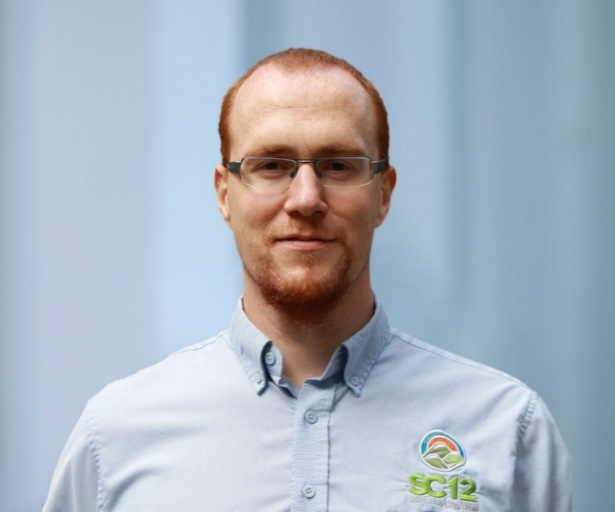
| Torsten Hoefler | 欧洲科学院院士、IEEE Transactions of Parallel and Distributed Computing(TPDS)及Parallel Computing Journal(PARCO)副主编 | 苏黎世联邦理工学院(瑞士) | Efficient AI: From Supercomputers to Smartphones |
|
Data Analytics and Optimization for Smart Industry
Prof. Lixin Tang

Member of the Chinese Academy of Engineering, Vice President of Northeastern University, Director of the Key Laboratory of Intelligent Industrial Data Parsing and Optimization, Ministry of Education, Director of the Center for Industrial Artificial Intelligence and Big Data Science
Northeastern University, Liaoning Province, China
Abstract: Data analytics is the frontier basic research direction of industrial intelligence and one of the driving forces to promote scientific development. Systems optimization is the core basic theory of decision-making in smart industry, as well as the heart and engine of data analytics. This talk will discuss some systems modeling methods and optimization solution methods we have been working on. The systems modeling methods are to quantitatively describe different practical problems with proper formulations, including set-packing model, space-time network model, and continuous-time based model. The optimization solution methods include integer optimization, convex optimization,intelligent optimization, anddynamic optimization. This talk will also introduce systems optimization and data analytics of production, logistics, and energy in the steel industry, including: 1) production batching and scheduling in steelmaking/continuous casting, and hot/cold rolling operations; 2) logistics scheduling in loading operations, shuffling/reshuffling, and stowage; 3) data analytics-based energy optimization, including dynamic energy allocation and scheduling,energy analytics covering energy description, diagnosis and prediction; 4) data analytics, including temperature prediction of blast furnace, dynamic analytics of BOF steelmaking process based on multi-stage modeling, temperature prediction of reheat furnace based on mechanism and machine learning, and strip quality analytics of continuous annealing based on multi-objective ensemble learning.
Bio-Sketch: Professor Lixin Tang is the Vice President of Northeastern University, China, a member of Chinese Academy of Engineering, the Director of Key Laboratory of Data Analytics and Optimization for Smart Industry, Ministry of Education, China, the Director of Center for Artificial Intelligence and Data Science, and the Director and Chair Professor of the National Frontiers Science Center for Industrial Intelligence and Systems Optimization, Northeastern University. He is also a member of the discipline review group of the State Council for Control Science and Engineering, the Deputy Director of Artificial Intelligence Special Committee in Science and Technology Commission, Ministry of Education, China, Chief Expert in optimization algorithms and software decision-making advisory panel of China Association for Science and Technology, the Vice President of Chinese Society for Metals, the Vice President of Operations Research Society of China (ORSC), and the Founding Director of Data Analytics and Optimization Society for Smart Industry of ORSC.
His research interests cover industrial intelligence and systems optimization theories and methods, covering industrial big data, data analytics and machine learning, deep learning and evolutionary learning, reinforcement learning and dynamic optimization, convex and sparse optimization, integer and combinatorial optimization, and computational intelligence-based optimization. For technologies, he mainly investigates on systems optimization technology for plant-wide production and inventory planning, production and logistics batching and scheduling, process optimization and optimal control; quality analytics technology such as process monitoring, equipment diagnosis, and product quality perception; industrial intelligence technology such as image and speech understanding and visualization. Meanwhile, he applies the above theories and technologies to engineering applications in steel manufacturing industry, equipment/chip manufacturing industry, energy industry, logistics industry and information industry.
He currently serves as an Associate Editor of IISE Transactions, IEEE Transactions on Evolutionary Computation, IEEE Transactions on Cybernetics, Journal of Scheduling, International Journal of Production Research, and Journal of the Operational Research Society. Meanwhile, he is on the Editorial Board of Annals of Operations Research, and serves as an Area Editor of the Asia-Pacific Journal of Operational Research.
Challenges and reflections on the development of the digital economy
Prof. Changjun Jiang

Member of the Chinese Academy of Engineering
Honorary Professor, Brunel University London
Fellow of the Institution of Engineering and Technology, UK
Department of Computer Science, Tongji University, China
Abstract: Firstly, it reviews the history of human economic and social development, from the agricultural economy to the industrial economy and then to the development elements and characteristics of the digital economy, and explains that science and technology innovation is the driving force of human economic and social change and development; it points out the bottlenecks in the development of the digital economy and analyses the major challenges faced in the development of the current generation of information technology; finally, it analyses the respective focuses of the development of the digital economy in major countries around the world and the strategies and solutions on how China can break the bottlenecks and achieve leapfrog development in the process of the development of the digital economy, so as to create a new competitive advantage in the digital economy.
Bio-Sketch: Jiang Changjun, a computer expert, is an academician of the Chinese Academy of Engineering. He is a Chair Professor of Tongji University, Honorary Professor of Brunel University London, Fellow of the Institution of Engineering and Technology of the United Kingdom, National Outstanding Young Scientist, Chief Scientist of 973, National Outstanding Science and Technology Worker, and National Innovation Award Winner. He has been awarded 106 invention patents in China, USA and Germany, 22 international PCT patents, more than 300 papers (including 82 in ACM/IEEE journals), 5 monographs in English and Chinese, 1 National Technical Invention Second Prize (rank 1), 2 National Science and Technology Progress Second Prize (both rank 1), HO PAN CHING YI Award (independent), etc. He has long devoted himself to research on network computing, and his achievements have been positively evaluated and cited by academicians and other renowned experts from the United States, the United Kingdom, Germany, Sweden, India and other countries. He has presided over the establishment of China's first network transaction risk prevention and control system, system and standards, making pioneering contributions to China becoming an international "leader" in this field.
How to break through the a priori assumptions of machine learning?
Prof. Zongben Xu

Member of the Chinese Academy of Sciences
Xi'an Jiaotong University, Pazhou Laboratory, Huangpu, China
Abstract: Machine learning is the most fundamental and core technology (algorithm) of artificial intelligence, but its implementation is usually premised on a set of fundamental a priori assumptions, including: the assumption of large capacity of the hypothesis space, the assumption of completeness of training data, the assumption of data independence of loss measures, the assumption of empirical setting of regular terms, and the assumption of Euclidean space of the analysis framework. This report analyses the role and limitations of these assumptions and their implications, and proposes possible ways and means to break through these basic assumptions. In particular, we propose a model-driven deep learning approach that breaks the assumption of large spatial capacity, a course-self-step learning approach that breaks the assumption of completeness of training data, an error modelling principle that breaks the assumption of independence of loss metric data, an implicit regularisation approach that breaks the assumption of empirical setting of regular terms, and a Banach spatial geometry approach that breaks the assumption of Euclidean space of the analytic framework. In each case, we give examples of new breakthroughs that bring new value. All these attempts constitute a theory of fitness for machine learning, a new direction in machine learning research today.
Bio-Sketch: Xu Zongben is a member of the Chinese Academy of Sciences, a mathematician, an expert in signal and information processing, and a professor at Xi'an Jiaotong University. He is mainly engaged in research on the fundamental theory of intelligent information processing, machine learning and data modelling. He has proposed the L(1/2) regularization theory for sparse information processing, providing an important foundation for sparse microwave imaging; discovered and proved the "Xu-Roach" theorem for machine learning, solving some difficult problems in neural network and evolutionary simulation computation, and providing a general quantitative derivation for machine learning and non-linear analysis in a non-Euclidean framework. He has also proposed innovative mathematical theories for distributed microdose CT and ultrafast MRI, which provide the basic principles and technologies for the development of new generation of intelligent medical imaging devices. He was awarded the Second Prize of National Natural Science, the Second Prize of National Science and Technology Progress, and the Highest Science and Technology Prize of Shaanxi Province. He was awarded the International IAITQM Richard Price Award for Data Science, the Chen Jiageng Prize for Science, the Hua Luogeng Prize for Mathematics, and the Su Buqing Prize for Applied Mathematics. He was the Vice President of Xi'an Jiaotong University and is currently the Director of the Guangdong Provincial Laboratory of Artificial Intelligence and Digital Economy (Pazhou Lab (Huangpu)), President of the Xi'an Institute of Mathematics and Mathematical Technology, Director of the National Centre for Applied Mathematics in Shaanxi, Director of the National Engineering Laboratory of Big Data Algorithms and Analysis Technology, and a member of the National Expert Advisory Committee on Big Data and the National Strategic Advisory Committee on New Generation Artificial Intelligence.
Recent advances and trends in event-triggered control of nonlinear systems
Prof. Yongduan Song

IEEE Fellow, Member of the International Eurasian Academy of Sciences, Registered Professional Engineer (USA)
Managing Director of the Chinese Academy of Automation
Chongqing University, Chongqing, China
Abstract: Event-triggered control has received much attention due to its significant advantages in improving the efficiency of using communication resources, reducing energy consumption and easing the computational burden. This presentation will first introduce several common approaches to trigger control design and analysis; then present the challenges and solutions to the design of state/output trigger controllers based on the Backstepping technique for standard form systems and non-matching uncertain nonlinear systems; and finally discuss possible trends and new research directions.
Bio-Sketch: Yongduan Song is an IEEE Fellow, a renowned scholar in the field of control theory and artificial intelligence, an expert selected under the National Key Talent Program, a registered professional engineer (USA), an executive director of the Chinese Society of Automation, a member of the International Eurasian Academy of Sciences, a Fellow of the Chinese Society of Automation, and the Director of the Institute of Artificial Intelligence of Chongqing University. He is currently the Editor-in-Chief of IEEE Trans. on Neural Networks and Learning Systems and Associate Editor of IEEE Trans. on Automatic Control and IEEE Trans on Intelligent Transportation Systems.
Self-Organised Nervous Systems for Robot Swarms
Prof. Marco Dorigo

Member of Academia European, Inventor of the ant colony optimization metaheuristic, IEEE Fellow, AAAI Fellow, ECAI Fellow, Editor-in-Chief of the journal “Swarm Intelligence”
University Libre De Bruxelles, Iridis, Belgium
Abstract: Typically, robot swarms coordinate through self-organization. With the proposal of the self-organized nervous system concept, we study how self-organization can be made more powerful as a tool to coordinate the activities of a robot swarm by injecting some components of hierarchical control. In the presentation, I will give a brief overview of the self-organized nervous systems concept and then illustrate the first steps we have made in implementing it in a heterogeneous swarm composed of drones and ground robots.
Bio-Sketch: Marco Dorigo received the Ph.D. degree in electronic engineering in 1992 from Politecnico di Milano, Milan, Italy. From 1992 to 1993, he was a Research Fellow at the International Computer Science Institute, Berkeley, CA. In 1993, he was a NATO-CNR Fellow, and from 1994 to 1996, a Marie Curie Fellow. Since 1996, he has been a tenured Researcher of the FNRS, the Belgian National Funds for Scientific Research, and co-director of IRIDIA, the artificial intelligence laboratory of the ULB. His current research interests include swarm intelligence, swarm robotics, and metaheuristics for discrete optimization. He is the Editor-in-Chief of Swarm Intelligence, and an Associate Editor or member of the Editorial Boards of many journals on computational intelligence and adaptive systems. Dr. Dorigo is a Fellow of the AAAI, EurAI, and IEEE. He was awarded numerous international prizes among which the Marie Curie Excellence Award in 2003, the IEEE Frank Rosenblatt Award in 2015, and the IEEE Evolutionary Computation Pioneer Award, awarded in 2016.
The Super Neuron Model – A new generation of ANN-based Machine Learning and Applications
Prof. Moncef Gabbouj

IEEE Fellow, member of the IEEE Fourier Award and the Harry Goode Award, Member of Academia European
Fellow of the Asia-Pacific Artificial Intelligence Association
Finland Site Director of NSF IUCRC Center for Visual and Decision Informatics (CVDI)
Department of Computing Sciences, Tampere University, Tampere, Finland.
Abstract: Operational Neural Networks (ONNs) are new generation network models targeting to address two major drawbacks of conventional Convolutional Neural Networks (CNNs): the homogenous network configuration and the “linear” neuron model that can only perform linear transformations over previous layer outputs. ONNs can perform any linear or non-linear transformation with a proper combination of “nodal” and “pool” operators. This is a great leap towards expanding the neuron’s learning capacity in CNNs, which thus far required the use of a single nodal operator for all synaptic connections for each neuron. This restriction has recently been lifted by introducing a superior neuron called the “generative neuron” where each nodal operator can be customized during the training in order to maximize learning. As a result, the network is able to self-organize the nodal operators of its neurons’ connections. Self-Organized ONNs (Self-ONNs) equipped with superior generative neurons can achieve diversity even with a compact configuration. We shall explore several signal processing applications of neural network models equipped with the superior neuron.
Bio-Sketch: Moncef Gabbouj received his BS degree in 1985 from Oklahoma State University, and his MS and PhD degrees from Purdue University, in 1986 and 1989, respectively, all in electrical engineering. Dr. Gabbouj is a Professor of Information Technology at the Department of Computing Sciences, Tampere University, Tampere, Finland. He was Academy of Finland Professor during 2011-2015. His research interests include Big Data analytics, multimedia content-based analysis, indexing and retrieval, artificial intelligence, machine learning, pattern recognition, nonlinear signal and image processing and analysis, voice conversion, and video processing and coding. Dr. Gabbouj is a Fellow of the IEEE and member of the Academia European and the Finnish Academy of Science and Letters. He is the past Chairman of the IEEE CAS TC on DSP and committee member of the IEEE Fourier Award for Signal Processing. He served as associate editor and guest editor of many IEEE, and international journals and Distinguished Lecturer for the IEEE CASS. Dr. Gabbouj served as General Co-Chair of IEEE ISCAS 2019, ICIP 2020, ICIP 2024 and ICME 2021. Gabbouj is Finland Site Director of the USA NSF IUCRC funded Center for Visual and Decision Informatics (CVDI) and led the Artificial Intelligence Research Task Force of Finland’s Ministry of Economic Affairs and Employment funded Research Alliance on Autonomous Systems (RAAS).
Secure and Privacy-Preserving Data-Driven Evolutionary Optimization
Prof. Yaochu Jin

Member of Academia European, IEEE Fellow
Alexander von Humboldt Professor for Artificial Intelligence
Editor-in-Chief of Complex & Intelligent Systems
Bielefeld University, Germany
Abstract: Security and privacy preservation have become increasingly important, as artificial intelligence has been deployed in a wider range of applications. After briefly reviewing data-driven optimization and privacy preserving computing techniques, this talk first presents a privacy-preserving data-driven evolutionary optimization algorithm that integrates federated learning with Bayesian optimization. To presence the privacy of both raw data and new query data, a secure federated data-driven optimization algorithm is proposed by solving the acquisition function at a randomly selected client and masking the objective values with Diffie-Hellmann based noise. A summary of secure and privacy-preserving data-driven optimization and an outline of future work are given at the end of the talk.
Bio-Sketch: Yaochu Jin is an Alexander von Humboldt Professor for Artificial Intelligence endowed by the German Federal Ministry of Education and Research, with the Faculty of Technology, Bielefeld University, Germany. He is also a Surrey Distinguished Chair, Professor in Computational Intelligence, Department of Computer Science, University of Surrey, Guildford, U.K. He was a “Finland Distinguished Professor” of University of Jyväskylä, Finland, “Changjiang Distinguished Visiting Professor”, Northeastern University, China, and “Distinguished Visiting Scholar”, University of Technology Sydney, Australia. His main research interests include evolutionary optimization and learning, trustworthy machine learning and optimization, and evolutionary developmental AI.
Prof Jin is presently the Editor-in-Chief of Complex & Intelligent Systems. He was the Editor-in-Chief of the IEEE Transactions on Cognitive and Developmental Systems, an IEEE Distinguished Lecturer in 2013-2015 and 2017-2019, the Vice President for Technical Activities of the IEEE Computational Intelligence Society (2015-2016). He is the recipient of the 2018 and 2021 IEEE Transactions on Evolutionary Computation Outstanding Paper Award, and the 2015, 2017, and 2020 IEEE Computational Intelligence Magazine Outstanding Paper Award. He was named by the Web of Science as “a Highly Cited Researcher” consecutively from 2019 to 2022. He is a Member of Academia Europaea and Fellow of IEEE.
Evolutional Computation for Dynamic Multi-objective Optimization
Prof. Shengxiang Yang

IEEE Senior Member
Associate Editor for the IEEE Transactions on Evolutionary Computation
IEEE Transactions on Cybernetics, and Information Science
Deputy Director of the Institute of Artificial Intelligence, De Montfort University
De Montfort University, UK
Abstract: Many real-world optimization problems involve multiple conflicting objectives to be optimized simultaneously and are subject to changes over time regarding optimization objectives, decision variables, and/or constraint conditions. Such dynamic multi-objective optimization problems (DMOPs) are challenging and important problems in many fields. Evolutionary computation (EC) encapsulates a class of stochastic optimization methods that are inspired by the principles of natural evolution. In recent years, there has been a rising interest in studying EC for DMOPs with some promising results. This talk will first briefly introduce the research area of EC for DMOPs, including DMOP benchmark problems and performance measures, then review main approaches developed to enhance EC methods for DMOPs and describe several case studies on EC methods for DMOPs. Finally, the current challenges and future work on EC for DMOPs will be briefly discussed.
Bio-Sketch: Prof. Shengxiang Yang is now a Professor of Computational Intelligence (CI) and Deputy Director of the Institute of Artificial Intelligence, School of Computer Science and Informatics, De Montfort University, UK. He has worked extensively for many years in the areas of CI methods, including evolutionary computation, artificial neural networks, data mining and data stream analysis, and their applications for real-world problems. His work has been supported by UK EPSRC, Royal Society, Royal Academy of Engineering, EU FP7 and Horizon 2020, and industry partners. He has over 370 publications with over 16000 citations and an H-index of 65 according to Google Scholar. He appeared in the 2021 and 2022 Stanford University World's Top 2% of Scientists List in Artificial Intelligence & Image Processing. He served/serves as an Associate Editor or Editorial Board Member of over 10 international journals, including IEEE Transactions on Evolutionary Computation, IEEE Transactions on Cybernetics, etc. He was the founding chair of the Task Force on Intelligent Network Systems (2012-2017) and the chair of the Task Force on Evolutionary Computation in Dynamic and Uncertain Environments (2011-2017) of the IEEE Computational Intelligence Society. He has given over 30 keynote speeches and tutorials at international conferences.
Advances in Collaborative Neurodynamic Optimization
Prof. Jun Wang

Foreign Member of Academia European, IEEE Fellow, IAPR Fellow, Editor-in-Chief of IEEE Transactions on Cybernetics
Department of Computer Science and School of Data Science City University of Hong Kong, Kowloon Tong, Kowloon, Hong Kong
Abstract: The past four decades witnessed the birth and growth of neurodynamic optimization, which has emerged as a potentially powerful problem-solving tool for constrained optimization due to its inherent nature of biological plausibility and parallel and distributed information processing. Despite the success, almost all existing neurodynamic approaches a few years ago worked well only for optimization problems with convex or generalized convex functions. Effective neurodynamic approaches to optimization problems with nonconvex functions and discrete variables are rarely available. In this talk, the advances in neurodynamic optimization will be presented. Specifically, In the proposed collaborative neurodynamic optimization framework, multiple neurodynamic optimization models with different initial states are employed for scattered searches. In addition, a meta-heuristic rule in swarm intelligence (such as PSO) is used to reposition neuronal states upon their local convergence to escape local minima toward global optima. Experimental results will be elaborated to substantiate the efficacy of several specific paradigms in this framework for supervised/semi-supervised feature selection, supervised learning, vehicle-task assignment, financial portfolio selection, and energy load dispatching.
Bio-Sketch: Jun Wang is the Chair Professor of Computational Intelligence in the Department of Computer Science and School of Data Science at City University of Hong Kong. Prior to this position, he held various academic positions at Dalian University of Technology, Case Western Reserve University, University of North Dakota, and the Chinese University of Hong Kong. He also held various short-term visiting positions at USAF Armstrong Laboratory, RIKEN Brain Science Institute, and Shanghai Jiao Tong University. He received a B.S. degree in electrical engineering and an M.S. degree from Dalian University of Technology and his Ph.D. degree from Case Western Reserve University. He was the Editor-in-Chief of the IEEE Transactions on Cybernetics. He is an IEEE Life Fellow, IAPR Fellow, and a foreign member of Academia European. He is a recipient of the APNNA Outstanding Achievement Award, IEEE CIS Neural Networks Pioneer Award, CAAI Wu Wenjun AI Achievement Award, and IEEE SMCS Norbert Wiener Award, among other distinctions.
Society-Oriented Developments of Machine Learning:
Challenges and Opportunities
Prof. Witold Pedrycz

Member of the Royal Society of Canada, Foreign Member of the Polish Academy of Sciences, IEEE Life Fellow, Editor in Chief, Information Sciences, Co-editor-in-Chief of Int. J. of Granular Computing
Department of Electrical & Computer Engineering
University of Alberta, Edmonton, Canada
Abstract: Over the recent years, we have been witnessing numerous achievements of Artificial Intelligence and Machine Learning (ML), in particular. We have seen highly visible accomplishments encountered in the domains of natural language processing and computer vision impacting numerous areas of human endeavours. Being driven inherently by the technologically advanced learning and architectural developments, ML constructs are highly impactful coming with far reaching consequences; just to mention autonomous vehicles, health care imaging, decision-making processes in critical areas, among others.
We advocate that the design and analysis of ML constructs have to be carried out in a holistic manner by identifying and addressing a series of central and unavoidable societal quests. The key challenges on the list of interest concerns interpretability, energy awareness (being also lucidly identified on the agenda of green AI), efficient quantification of quality of ML constructs, and privacy. The credibility of ML models and credibility of their results are also of concern to the society. The above stated quests are highly intertwined and exhibit relationships with the technological end of ML.
The talk elaborates on the above challenges, offers definitions and identifies the linkages among them. In the pursuit of coping with such challenges, we advocate that Granular Computing can play a pivotal role offering a sound conceptual environment and realizing algorithmic development. As a detailed study, we discuss the ideas of federated learning emphasizing a way in which data privacy becomes addressed. We revisit an idea of knowledge transfer demonstrating on how a thoughtful and prudently arranged knowledge reuse supports energy-aware ML computing. We discuss passive and active modes of knowledge transfer. In both modes, the essential role of information granularity is identified. In the passive approach, information granularity serves as a vehicle to quantify the credibility of the transferred knowledge. In the active approach, a new model is constructed in the target domain whereas the design is guided by the loss function, which involves granular regularization produced by the granular model transferred from the source domain. A generalized scenario of multi-source domains is discussed. Knowledge distillation leading to model compression is also studied in the context of transfer learning.
Bio-Sketch: Witold Pedrycz is a Professor and Canada Research Chair (CRC - Computational Intelligence) in the Department of Electrical and Computer Engineering, University of Alberta, Edmonton, Canada. He is also with the Systems Research Institute of the Polish Academy of Sciences, Warsaw, Poland. In 2009 Dr. Pedrycz was elected a foreign member of the Polish Academy of Sciences. He main research directions involve Computational Intelligence, fuzzy modeling and Granular Computing, knowledge discovery and data mining, fuzzy control, pattern recognition, knowledge-based neural networks, relational computing, and Software Engineering. He has published numerous papers in this area. He is also an author of 14 research monographs covering various aspects of Computational Intelligence and Software Engineering. Witold Pedrycz has been a member of numerous program committees of IEEE conferences in the area of fuzzy sets and neurocomputing. Dr. Pedrycz is intensively involved in editorial activities. He is an Editor-in-Chief of Information Sciences and Editor-in-Chief of IEEE Transactions on Systems, Man, and Cybernetics - part A. He currently serves as an Associate Editor of IEEE Transactions on Fuzzy Systems and is a member of a number of editorial boards of other international journals. In 2007 he received a prestigious Norbert Wiener award from the IEEE Systems, Man, and Cybernetics Council. He is a recipient of the IEEE Canada Computer Engineering Medal 2008. In 2009 he has received a Cajastur Prize for Soft Computing from the European Centre for Soft Computing for "pioneering and multifaceted contributions to Granular Computing".
AI for all: Before we are ready can there be a winter?
Prof. Nikhil R. Pal

Fellow of Indian National Academy of Engineering, Indian National Science Academy, National Academy of Sciences, India, IEEE Fellow
Indian Statistical Institute Calcutta, India
Abstract:We are witnessing an astonishing success of Artificial Intelligence (AI) in diverse areas like gaming, natural language processing, healthcare, E-commerce, automobiles, and robotics to name a few; consequently, the expectation from AI has skyrocketed. There is a global thrust on “AI for all” and “AI everywhere”. But are we really ready for these? Apparently, there is an implicit belief in philosophies like “bigger the better” (bigger data sets or bigger architecture with millions of free parameters) and “the data say all”. Such approaches have been found to be very successful too. But are we in the right direction? Are all real-life problems big data problems? Does a child need thousands of examples to learn distinguishing between cows and dogs, for example? Certainly not! In this talk, I shall discuss a few important issues that demand attention. In my view, any intelligent system should have, at least, attributes like simplicity, transparency, fairness, explainability, trustworthiness, sustainability, and its biological plausibility, if that makes sense. Ideally, we should try to realize all these attributes in any AI system, but that would be very difficult. Moreover, obtaining universally acceptable definitions of these attributes may not be an easy task. There are ethical and social issues including misuse of AI. In this context, I shall raise questions if the primary focus of Major AI research is in right direction! Explain, how this is leading to unfairness in research opportunities among scientists posing some “threat” to sustainable AI research. I am not a pessimistic, yet, I have some concern about possibility of a winter (may not be a deep one) in AI research an developments. I shall try to justify my views. I shall also allude to the role of brain science in designing useful AI systems. Finally, I shall illustrate how one of these issues can be partially addressed taking inspiration from cat’s visual cortex.
Bio-Sketch: Nikhil R. Pal is a Professor in the Electronics and Communication Sciences Unit and is associated with the Center for Artificial Intelligence and Machine Learning of the Indian Statistical Institute. His current research interest includes brain science, computational intelligence, machine learning, and data mining. He was the Editor-in-Chief of the IEEE Transactions on Fuzzy Systems for the period January 2005-December 2010. He served/has been serving on the editorial /advisory board/ steering committee of several journals including the International Journal of Approximate Reasoning, Applied Soft Computing, International Journal of Neural Systems, Fuzzy Sets and Systems, IEEE Transactions on Fuzzy Systems and the IEEE Transactions on Cybernetics.
He is a recipient of the 2015 IEEE Computational Intelligence Society (CIS) Fuzzy Systems Pioneer Award, He has given many plenary/keynote speeches in different premier international conferences in the area of computational intelligence. He has served as the General Chair, Program Chair, and co-Program chair of several conferences. He has been serving as a Distinguished Lecturer of the IEEE CIS (2010-2012, 2016-2018.2022-2024) and was a member of the Administrative Committee of the IEEE CIS (2010-2012). He served as the Vice-President for Publications of the IEEE CIS (2013-2016) and the President of the IEEE CIS (2018-2019).
He is a Fellow of the National Academy of Sciences, India, Indian National Academy of Engineering, Indian National Science Academy, International Fuzzy Systems Association (IFSA), The World Academy of Sciences, and a Fellow of the IEEE, USA.
Image Analysis and Diagnosis by Artificial intelligence: technical and legal questions
Prof. Sergey Ablameyko
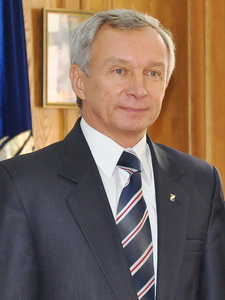
IAPR Fellow, AAIA Fellow
Academician of Academia European
Academician of National Academy of Belarus
Belarusian State University, Minsk, Republic of Belarus
Abstract: Artificial intelligence (AI) is started to widely used in the medical field and has great potential benefits to help doctors and patients. However, it gives new challenges and problems. This lecture analyzes the existed AI abilities to analyze medical images, to make a diagnosis and how legally assess its consequences.
AI development and implementation should follow two main directions: technical and legal. From the first point of view, AI system is a hardware and software complex, in which the software is the AI "brain". It is created by scientists and engineers. But then AI begins to work in medicine, that is, to live among people. And for such joint activities, it is necessary to have a well-developed legal framework that accurately defines the norms of behaviour of three sides (AI-doctor-patient) in different situations.
The most AI systems are used to help doctor to make a diagnosis. Most of diagnosis in medicine are made based on analysis of medical images. The use of AI in the analysis of medical images is under continuous evolution. A number of tools based on artificial intelligence have been developed to automate medical image analysis and improve automatic image interpretation. We will show main projects and systems created in Belarus, discuss their results and include main recommendations for developing E-Health systems.
Many medical diagnoses are based on analysis of microscopic images. Independent cells, cell groups, tissue sections, separate fibers, and tissue inclusions are examined as objects in biological microscopy. Scientific results in the area of histology/cytology image interpretation will also be shown. Developed image processing tools for medical image feature extraction will be described. Computer analysis of cytological images for differential diagnosis of thyroid diseases will be shown. Examples of systems for making diagnosis of cancer from image analysis will be shown. The AI output to doctor and doctor responsibility for making diagnosis based on AI recommendations will be considered. International practice will be analyzed on how to implement AI systems in medicine. Finally, we will put forward some suggestions on how to improve the legal framework of AI using in medicine.
Bio-Sketch:Sergey Ablameyko (born in 1956, DipMath in 1978, PhD in 1984, DSc in 1990, Prof in 1992). He was a General Director of the United Institute of Informatics Problems of the National Academy of Sciences of Belarus (2002-2008), Rector (President) of the Belarusian State University (2008-2017) and now he is a Professor of BSU.
He has more than 650 publications including 25 authored/co-authored books (one published by Springer (UK), one - by SPIE (USA), one – by Exit (Poland) and 25 edited books (two published by IOS Press in NATO Science Series). In his academic career he was a visiting scientist in Italy, Japan, Sweden, Finland, England, Germany, UK, Greece, Spain, Australia, New Zealand, China. He was a chair/co-chair, member of Program Committees of numerous (more than 100) International conferences held worldwide. He is in Editorial Board of Pattern Recognition and Image Analysis, Non-linear Phenomena in Complex Systems and many other international journals. His scientific interests are: image analysis, pattern recognition, digital geometry, graphics recognition, knowledge based systems, geographical information systems, medical imaging.
He is IEE Fellow (UK) (1995), IEEE Senior Member (USA) (1995), Academician of International Academy of Information Processes and Technologies (1995), Academician of Belarusian Academy of Engineering (1995), Fellow of International Association for Pattern Recognition (1998), Academician of the National Academy of Sciences of Belarus (2009), Academician of Spanish Royal Academy of Doctors (2009), Academician of European Academy of Economy and Enterprise Management (2010), Academician of Academia European (2011), Honorary professor of Grodno State University, Belarus (2012), Academician of Russian Space Academy (2012), Honorary professor of Dalian University of Technology, China (2013), Honorary professor of Moscow State University, Russia (2014), Honorary professor of Binh Duong University, Vietnam (2014), Academician of Russian Academy of Natural Sciences (2015), Academician of Spanish Royal Academy of Economics and Finance (2016), Honorary professor of Belgrade Alfa BK University, Serbia (2016). He is a Vice-President of Asia-Pacific Artificial Intelligence Association (China, from 2021).
For his activity he was awarded by State Prize of Belarus (highest national scientific award), Friendship Award of Russian Federation (2009), Friendship Award of Zhejiang Province of China (2018) and many other national and international awards.
State-of-the-art in Learned Video Compression
Prof. A. Murat Tekalp

Member of Turkish Academy of Sciences, Member of Academia European, IEEE Fellow, Lifetime Achievement Award of IEEE Turkey Section
College of Engineering, Ko¸c University, Istanbul, Turkey.
Abstract:Conventional image/video compression methods employ a linear transform and block motion model (for video), and the steps of motion estimation, mode and quantization parameter selection, and entropy coding are typically optimized individually due to the combinatorial nature of the end-to-end optimization problem. Learned image/video compression allows end-to-end rate-distortion (R-D) optimized training of nonlinear transform, motion compensation and entropy models simultaneously. A further benefit of data-driven deep learning approach is that neural models can be optimized for any differentiable loss function, including visual perceptual loss functions, leading to perceptual image/video compression, which cannot be easily handled by traditional codecs. In this talk, I will first briefly review the recent advances in learned image compression, including the multi-rate neural models and the rate-perception-distortion tradeoff in learned image coding. Then, after an introduction to approaches for learned motion compensation, including recurrent models, I will discuss the state-of-the-art in learned video compression and present recent results on learned low-delay and randomaccess codec configurations, including our own work on hierarchical bi-directional video compression that combines the benefits of hierarchical bi-directional motion compensation and end-to-end rate-distortion optimization.
Bio-Sketch:A. Murat Tekalp received BS degrees in in electrical engineering and mathematics from Bogazici University (1980) with high honors, and his MS and PhD in electrical, computer, and systems engineering from Rensselaer Polytechnic Institute (RPI), Troy, New York (1982 and 1984, respectively). He was with Eastman Kodak Company, Rochester, New York, from December 1984 to June 1987, and with the University of Rochester, Rochester, New York, from July 1987 to June 2005, where he was promoted to Distinguished University Professor. Since June 2001, he has been a Professor at Koç University, Istanbul, Turkey. He was the Dean of Engineering at Koç University between 2010-2013. His research interests are in the area of digital image and video processing, including image/video compression, super-resolution, segmentation, content-based video analysis and summarization, 3D video processing, deep learning for image and video processing, video streaming and real-time video communications services, and software-defined networking. Prof. Tekalp is a Fellow of IEEE and a member of Turkish Academy of Sciences, Science Academy, and Academia European. He was named as Distinguished Lecturer by IEEE Signal Processing Society in 1998, and awarded a Fulbright Senior Scholarship in 1999. He has been the General Chair for IEEE Int. Conf. Image Processing (ICIP) in 2002, has been the Technical Program Co-Chair for ICIP 2020. He received the TUBITAK Science Award (highest scientific award in Turkey) in 2004. He served in the Editorial Boards of IEEE Signal Processing Magazine and Proceedings of the IEEE. He is currently on the Editorial Board of Wiley-IEEE Press. The new edition of his Prentice Hall book Digital Video Processing (1995) was published in June 2015. Dr. Tekalp holds eight US patents. He has participated in several European Framework projects, and is also a project evaluator for the European Commission and panel member for European Research Council.
Dynamics of Coupled Reaction-Diffusion Neural Networks
Prof. Tingwen Huang

Fellow of The World Academy of Sciences (TWAS)
Member of European Academy of Sciences and Arts
Academician of the International Academy for Systems and Cybernetic Sciences, a Fellow of IEEE, IAPR.
Abstract: Since neural networks are implemented by electric circuits, and the diffusion phenomena inevitably appear in electric circuits once electrons transport in a non-uniform electromagnetic field. It is critical to investigate the diffusional phenomena in coupled neural networks. We will discuss the dynamics such as the stability, synchronization, passivity of the neural networks with reaction-diffusion, and present several effective and powerful strategies such as adaptive strategy for the coupled reaction-diffusion neural networks reaching synchronization.
Bio-Sketch:Tingwen Huang is a Professor at Texas A&M University at Qatar. He received his B.S. degree from Southwest Normal University (now Southwest University), China, 1990, his M.S. degree from Sichuan University, China, 1993, and his Ph.D. degree from Texas A&M University, College Station, Texas, 2002. After graduated from Texas A&M University, he worked as a Visiting Assistant Professor there. Then he joined Texas A&M University at Qatar (TAMUQ) as an Assistant Professor in August 2003, then he was promoted to Professor in 2013. Dr. Huang’s research areas include neural networks, chaotic dynamical systems, complex networks, optimization and control, smart grid. He was named the Highly Cited Researcher by Clarivate Analytics. He was conferred Changjiang Chair Professor by Ministry of Education of China, Outstanding Achievement Award by Asia Pacific Neural Networks Society, The Association of Former Students Distinguished Achievement Award for Research, one of the highest honors bestowed to a faculty of Texas A&M University in College Station, USA, among others.
He is a Fellow of The World Academy of Sciences (TWAS), a Member of the European Academy of Sciences and Arts, an Academician of the International Academy for Systems and Cybernetic Sciences, a Fellow of IEEE, IAPR.
Stream Data Mining: From Sliding Windows to Deep Learning
Prof. Leszek Rutkowski

Member of the Polish Academy of Sciences, IEEE Fellow, Editor-in-chief, Journal of Artificial Intelligence and Soft Computing Research
Systems Research Institute of the Polish Academy of Sciences, Warsaw, Poland, and
Institute of Computer Science, the AGH University of Science and Technology, Krakow, Poland
Abstract: This lecture presents a collection of original methods and algorithms for stream data mining. Unlike the vast majority of previous approaches, which are largely based on heuristics, it highlights methods and algorithms that are mathematically justified. First, the basic concepts of stream data mining are outlined with a special emphasis put on concept drift – the phenomenon describing the time-varying nature of streaming data. Next, it describes how to adapt static decision trees to accommodate data streams; in this regard, new splitting criteria are developed to guarantee that they are asymptotically equivalent to the classical batch tree. Moreover, new decision trees are designed, leading to the original concept of hybrid trees. In turn, nonparametric techniques based on Parzen kernels and orthogonal series are employed to address concept drift in the problem of non-stationary regressions and classification in a time-varying environment. Next, an extremely challenging problem that involves designing ensembles and automatically choosing their sizes is described and solved. Finally, it will be shown how to use Restricted Boltzmann Machines for stream data processing and monitoring.
Bio-Sketch: Leszek Rutkowski received the M.Sc., Ph.D., and D.Sc. degrees from the Wrocław University of Technology, Wrocław, Poland, in 1977, 1980 and 1986, respectively, and the Honoris Causa degree from the AGH University of Science and Technology, Kraków, Poland, in 2014. He was from Czestochowa University of Technology. He is with the Systems Research Institute of the Polish Academy of Sciences, Warsaw, Poland, and with the Institute of Computer Science, AGH University of Science and Technology, Krakow, Poland, in both places serving as a Full Professor. From 1987 to 1990, he held a visiting position with the School of Electrical and Computer Engineering, Oklahoma State University, Stillwater, OK, USA. His research interests include data stream mining, big data analysis, neural networks, agent systems, fuzzy systems, image processing, pattern classification, and expert systems. He has published more than 300 technical papers, including more than 30 in various series of IEEE Transactions. He is the author of the following books: Computational Intelligence (Springer, 2008, available also in Polish and Russian), New Soft Computing Techniques for System Modeling, Pattern Classification and Image Processing (Springer, 2004), Flexible Neuro-Fuzzy Systems (Kluwer Academic, 2004), Methods and Techniques of Artificial Intelligence (2005, in Polish), Adaptive Filters and Adaptive Signal Processing (1994, in Polish), and co-author of two others in Polish: Neural Networks, Genetic Algorithms and Fuzzy Systems (1997) and Neural Networks for Image Compression (2000). His recent monograph on stream data mining has been published by Springer in the series Studies in Big Data. He is the president and founder of the Polish Neural Networks Society. He organized and served as a General Chair of the International Conferences on Artificial Intelligence and Soft Computing held in 1996, 1997, 1999, 2000, 2002, 2004, 2006, 2008, 2010, and annually in 2012 -2022. He was an associate editor of the IEEE Transactions on Neural Networks (1998-2005) and IEEE Systems Journal (2007-2010), Evolving Systems (2017-2019), and a few others. He is editor-in-chief of the Journal of Artificial Intelligence and Soft Computing Research, and he is on the editorial board of the IEEE Transactions on Cybernetics, International Journal of Neural Systems, International Journal of Applied Mathematics and Computer Science, International Journal of Biometric, Knowledge and Information Systems. He is a recipient of the IEEE Transactions on Neural Networks 2005 Outstanding Paper Award. He served in the IEEE Computational Intelligence Society as the chair of the Distinguished Lecturer Program (2008-2009) and the chair of the Standards Committee (2006-2007). He is the founding chair of the Polish chapter of the IEEE Computational Intelligence Society, which won the 2008 Outstanding Chapter Award. In 2004, he was awarded the IEEE Fellow membership grade for contributions to neurocomputing and flexible fuzzy systems. He received a degree honoris causa from the prestigious AGH University of Science and Technology in Cracow “in recognition of outstanding scientific achievements in the field of artificial intelligence - in particular, neuro-fuzzy systems”. He is a Full Member of the Polish Academy of Sciences, elected in 2016, and a Member of Academia of European, elected in 2022.
Nature-inspired optimization algorithms applied to fuzzy control, fuzzy modeling and mobile robot navigation
Prof. Radu-Emil Precup

Corresponding Member of the Romanian Academy,Editor-in-Chief, International Journal of Artificial Intelligence, Editorial board of IEEE Transactions on Fuzzy Systems, IEEE Transactions on Cybernetics
Department of Automation and Applied Informatics, Politehnica University of Timisoara, Timisoara, Romania
Abstract: An optimization problem is the problem of finding the best solution (i.e., the optimal solution) from all feasible solutions. There are two key components in an optimization problem: the objective function and the constraints, which are optional. The objective function assesses and compares the solutions in the context of all feasible solutions by computing the desired quantity to be minimized or maximized. The constraints can be added to limit the possible values for the variables of the objective function.
The optimization algorithms find the optimal solutions by trying variations on the initial solution using the information gained to improve the solution; this can be also considered as learning, which is a popular topic nowadays. The complexity of the classical algorithms is very high which requires enormous amount of computational work. Therefore, alternative algorithms with lower complexity are appreciated. The nature-inspired optimization algorithms as nature-inspired metaheuristic algorithms to find optimal solutions became very popular as they are much better in terms of efficiency and complexity than classical algorithms.
This speech highlights a part of the results obtained by the Process Control group of the Politehnica University of Timisoara, Romania. The presentation is focused on representative applications, implemented in our labs, with real-validated by experimental results. The results pointed out here include different lab equipment as pendulum-crane systems, multi-tank systems, servo systems, twin rotor aerodynamic systems, magnetic levitation systems, anti-lock braking systems, mobile robots, magnetic levitation systems, active mass damper systems, and shape memory alloy systems.
The scope of the development of these nature-inspired optimization algorithms is the solving of optimization problems that involve tuning of low-cost fuzzy controllers, tuning of fuzzy models, and solving optimization problems specific to mobile robot navigation.
Bio-Sketch: Radu-Emil Precup (M IEEE '03 - SM IEEE '07) was born in Lugoj, Romania, in 1963. He received the Dipl.Ing. (Hons.) degree in automation and computers from the "Traian Vuia" Polytechnic Institute of Timisoara, Timisoara, Romania, in 1987, the Diploma in mathematics from the West University of Timisoara, Timisoara, in 1993, and the Ph.D. degree in automatic systems from the "Politehnica" University of Timisoara, Timisoara, in 1996.
From 1987 to 1991, he was with Infoservice S.A., Timisoara. He is currently with the Politehnica University of Timisoara, Romania, where he became a Professor in the Department of Automation and Applied Informatics, in 2000, and he is currently a Doctoral Supervisor of automation and systems engineering. From 2016 to 2022, he was an Adjunct Professor within the School of Engineering, Edith Cowan University, Joondalup, WA, Australia. He is currently the Director of the Automatic Systems Engineering Research Centre with the Politehnica University of Timisoara, Romania. From 1999 to 2009, he held research and teaching positions with the Université de Savoie, Chambéry and Annecy, France, Budapest Tech Polytechnical Institution, Budapest, Hungary, Vienna University of Technology, Vienna, Austria, and Budapest University of Technology and Economics, Budapest, Hungary. He is an editorial board member of several prestigious journals including IEEE Transactions on Fuzzy Systems, IEEE Transactions on Cybernetics, Information Sciences (Elsevier), Engineering Applications of Artificial Intelligence (Elsevier), Applied Soft Computing (Elsevier), Expert Systems with Applications (Elsevier), Evolving Systems (Springer), Applied Artificial Intelligence (Taylor & Francis), Healthcare Analytics (Elsevier), and Communications in Transportation Research (Elsevier).
He is the author or coauthor of more than 300 papers published in various scientific journals, refereed conference proceedings, and contributions to books. His research interests include mainly development and analysis of new control structures and algorithms (conventional control, fuzzy control, data-based control, sliding mode control, neuro-fuzzy control, etc.), theory and applications of soft computing, computer-aided design of control systems, modeling, optimization (including nature-inspired algorithms), and applications to mechatronic systems (including automotive systems and mobile robots), embedded systems, control of power plants, servo systems, electrical driving systems.
Prof. Precup is a corresponding member of The Romanian Academy, a Doctor Honoris Causa of the Óbuda University, Budapest, Hungary, a Doctor Honoris Causa of the Széchenyi István University, Győr, Hungary, a member of the Task Force on Autonomous Learning Systems within the Neural Networks Technical Committee (TC) of the Institute of Electrical and Electronics Engineers (IEEE) Computational Intelligence Society, the TCs on Computational Cybernetics, and Cyber-Medical Systems of the IEEE Systems, Man, and Cybernetics Society, the Task Force on Adaptive and Evolving Fuzzy Systems within the Fuzzy Systems TC of the IEEE Computational Intelligence Society, the TCs on Data-Driven Control and Monitoring, and Control, Robotics and Mechatronics of the IEEE Industrial Electronics Society, the International Federation of Automatic Control (IFAC) TC on Computational Intelligence in Control (previously named Cognition and Control), the IFAC TC on Linear Control Systems, the Working Group WG 12.9 on Computational Intelligence of the Technical Committee TC12 on Artificial Intelligence of the International Federation for Information Processing (IFIP), the European Society for Fuzzy Logic and Technology (EUSFLAT), the Hungarian Fuzzy Association, and the Romanian Society of Control Engineering and Technical Informatics. He founded in 2015 and is the chair of the IEEE Systems, Man, and Cybernetics Society Romania Chapter. He has been the chair of the Timisoara Branch of the Robotics Society of Romania since 2020.
He was the recipient of the Elsevier Scopus Award for Excellence in Global Contribution (2017), the "Tudor Tănăsescu" Prize from the Romanian Academy for data-driven controller tuning techniques (2020), the "Grigore Moisil" Prize from the Romanian Academy, two times, in 2005 and 2016, for his contribution on fuzzy control and the optimization of fuzzy systems, the Spiru Haret Award from the National Grand Lodge of Romania in partnership with the Romanian Academy in 2016 for education, environment and IT, the Excellency Diploma of the International Conference on Automation, Quality & Testing, Robotics AQTR 2004 (THETA 14, Cluj-Napoca, Romania), two Best Paper Awards in the Intelligent Control Area of the 2008 Conference on Human System Interaction HSI 2008, Krakow (Poland), the Best Paper Award of 16th Online World Conference on Soft Computing in Industrial Applications WSC16 (Loughborough University, UK) in 2011, the Certificate of Appreciation for the Best Paper in the Session TT07 1 Control Theory of 39th Annual Conference of the IEEE Industrial Electronics Society IECON 2013 (Vienna, Austria), a Best Paper Nomination at 12th International Conference on Informatics in Control, Automation and Robotics ICINCO 2015 (Colmar, France), a Best Paper Award at 7th International Conference on Information Technology and Quantitative Management ITQM 2019 (Granada, Spain), a Best Paper Award at 8th International Conference on Information Technology and Quantitative Management ITQM 2020 & 2021 (Chengu, China), was named a 2022 academic data leader by Chief Data Officer (CDO) Magazine, and was listed as one of the top 10 researchers in Artificial Intelligence and Automation (according to IIoT World as of July 2017).
Analysis of multisensory interconnected mental memory circuits
Prof. Zhigang Zeng

IEEE Fellow, Chairman of the Board of Directors of the Asia-Pacific Neural Networks Society
Chairman of the Computational Intelligence Society Section of the IEEE Wuhan Chapter
Department of Artificial Intelligence and Automation, Huazhong University of Science and Technology
Abstract: Inspired by the neural mechanisms and biological phenomena of Pavlovian associative memory, a multisensory interrelated memory network framework and mnemonic circuit is proposed to mimic the biological brain's ability to make associations with simultaneously received information. The circuit consists of three main modules: (i) a storage neuron module, which encodes external multimodal information into spiking firing rates; (ii) a synaptic module, which utilizes non-volatile amnesia to enable weight adjustment and associative learning; and (iii) a retrieval neuron module, which feeds the retrieval signal output from each sensory pathway to the other sensory pathways, thus enabling multimodal inter-association and retrieval. Unlike other one-to-one or many-to-one unidirectional associative memory efforts, this circuit achieves bidirectional multimodal-to-multimodal association. In addition, we have modelled the acquisition, fading, recovery, transmission and consolidation properties of associative memory. The circuit was applied to cross-modal association of image and audio recognition results and simulated situational memory, where multiple images in a scene are associated intra-modally. The circuit was validated as hardware friendly through power and area analysis. Further research hopes to extend to large-scale associative memory networks, combining visual-auditory-tactile-smell sensory sensors, in an attempt to apply to intelligent robotic platforms.
Bio-Sketch: Zeng Zhigang, Professor, recipient of the National Outstanding Young Scientists Fund, Distinguished Professor of Changjiang Scholars of the Ministry of Education, Leader of Science and Technology Innovation under the Ten Thousand Talents Plan, IEEE Fellow, Dean of the School of Artificial Intelligence and Automation, Huazhong University of Science and Technology, Director of the Key Laboratory of Image Information Processing and Intelligent Control of the Ministry of Education, received his PhD degree in Systems Analysis and Integration from Huazhong University of Science and Technology in June 2003. He was a postdoctoral researcher at the Chinese University of Hong Kong and the University of Science and Technology of China. He has served as an editorial board member of IEEE Transactions on Neural Networks; IEEE Transactions on Cybernetics; IEEE Transactions on Fuzzy Systems; Cognitive Computation; Neural Networks; Applied Soft Computing; Journal of Automation; Control Engineering; Systems Engineering and Electronics Technology; Control Theory and Applications. He was awarded the First Prize of Natural Science Award of the Excellent Achievement Award of Scientific Research in Higher Education of the Ministry of Education, the First Prize of Natural Science of Hubei Province, the First Prize of Science and Technology Progress of Hubei Province, and the Second Prize of National Science and Technology Progress Award, etc.
Smart challenges for robots
Prof. Zengguang Hou
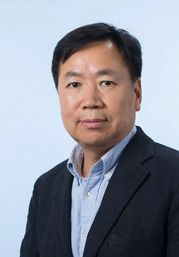
IEEE/CAA Fellow, Vice President of the Chinese Society of Automation
Vice President of the Asia Pacific International Society for Neural Networks
Board Member of the International Society for Neural Networks
Editorial Board Member of IEEE Transactions on Cybernetics, IEEE SMC Magazine, Neural Networks and other journals.
Institute of Automation, Chinese Academy of Sciences, Beijing, China.
Bio-Sketch:Zengguang Hou is a researcher and PhD supervisor at the Institute of Automation, Chinese Academy of Sciences, deputy director of the State Key Laboratory of Complex Systems Management and Control, a recipient of the National Outstanding Youth Fund, an inductee of the Ten Thousand Talents Program, and an IEEE/CAA Fellow. He is also a member of the editorial board of IEEE Transactions on Cybernetics, IEEE SMC Magazine, Neural Networks and other journals.
Collective Intelligence Network with Applications
Prof. Jinde Cao

Academicians of the Russian Academy of Sciences, the European Academy of Sciences, the Russian Academy of Engineering, Member of the African Academy of Sciences, the European Academy of Science and Arts, Member of the Pakistan Academy of Sciences, IEEE Fellow
Southeast University, Nanjing, China
Abstract: This presentation will briefly introduce the background and significance of the research on swarm intelligence network systems, the collaborative optimisation and application of swarm intelligence networks, and the dynamics and implication control of swarm intelligence networks.
Bio-Sketch: Jinde Cao, Chief Professor of Southeast University, Dean of the School of Mathematics, Director of the Department of Science, Director of the Jiangsu National Centre for Applied Mathematics (Southeast University), Director of the Jiangsu Provincial Key Laboratory of Network Group Intelligence, Member of the Teaching Instruction Committee of the Ministry of Education for Mathematics, Executive Director of the Chinese Society of Industrial and Applied Mathematics, Chairman of the Jiangsu Provincial Society of Industrial and Applied Mathematics, Chairman of the Jiangsu Provincial University Mathematics Union, etc. He is a recipient of the National Innovation Award and enjoys a special allowance from the State Council. He has been elected as a member of the Russian Academy of Sciences, the European Academy of Sciences, the Russian Academy of Engineering, the European Academy of Sciences and Arts, the African Academy of Sciences, the Pakistan Academy of Sciences, the International Academy of Systems and Control and the IEEE Fellow. He has long been engaged in research on complex networks and complex systems, neural dynamics and optimization, and engineering stability.
Automated Configuration Meets Evolutionary Algorithms
Prof. Thomas Bäck

Associate Editor for the IEEE Transactions on Evolutionary Computation and Artificial Intelligence Review journals
Area editor for the ACM Transactions on Evolutionary Learning and Optimization.
Leiden Institute of Advanced Computer Science (LIACS), Leiden University, Netherlands
Abstract: In machine learning, the optimization of hyperparameters (also called the algorithm configuration problem) is an important task. I will briefly explain this problem and provide some examples illustrating that this task can be handled by direct global optimization algorithms as well. While algorithm configuration is commonly applied to machine learning algorithms, algorithm configuration for evolution strategies is also an exciting application domain. I will give an example how a combinatorial design space of 4608 configuration variants of evolution strategies can be explored and investigated using data mining. This approach provides an opportunity for discovering the unexplored areas of the optimization algorithm design space. Moreover, it provides a path towards the automated design of optimization algorithms.
To conclude, I return to real world application examples and illustrate a few of those that my group worked on, over the past more than 20 years.
Bio-Sketch: Thomas Bäck (Fellow, IEEE) received the Diploma degree in Computer Science in 1990 and the Ph.D. degree in Computer Science in 1994 (under supervision of H.-P. Schwefel), both from the University of Dortmund, Germany. He is Professor of Computer Science with the Leiden Institute of Advanced Computer Science (LIACS), Leiden University, Netherlands. His research interests include evolutionary computation, machine learning, and their real-world applications, especially in sustainable smart industry and health.
Dr. Bäck has been elected as member of the Royal Netherlands Academy of Arts and Sciences (KNAW, 2021), as IEEE Fellow (class of 2022), and as a member of Academia European (2022). He was a recipient of the IEEE Computational Intelligence Society (CIS) Evolutionary Computation Pioneer Award in 2015, was elected as Fellow of the International Society of Genetic and Evolutionary Computation in 2003, and received the best Ph.D. thesis award from the German society of Computer Science (GI) in 1995.
He currently serves as an Associate Editor for the IEEE Transactions on Evolutionary Computation and Artificial Intelligence Review journals and area editor for the ACM Transactions on Evolutionary Learning and Optimization. He was also co-editor-in-chief of the Handbook of Evolutionary Computation (CRC Press/Taylor & Francis 1997), co-editor of the Handbook of Natural Computing (Springer, 2013), author of Evolutionary Computation in Theory and Practice (OUP, New York, 1996) and co-author of Contemporary Evolution Strategies (Springer, 2013).
Distributed Fault Diagnosis of Interconnected Cyber-Physical Systems
Prof. Marios Polycarpou

IEEE Fellow, IFAC Fellow
KIOS Reasearch and Innovation Center of Excellence
Academician, Member of the Cyprus Academy of Sciences, Letters, and Arts
Professor, Department of Electrical and Computer Engineering
University of Cyprus, Republic of Cyprus
Abstract: The emergence of interconnected cyber-physical systems and sensor/actuator networks has given rise to advanced automation applications, where a large amount of sensor data is collected and processed in order to make suitable real-time decisions and to achieve the desired control objectives. However, in situations where some components behave abnormally or become faulty, this may lead to serious degradation in performance or even to catastrophic system failures, especially due to cascaded effects of the interconnected subsystems. Distributed fault diagnosis refers to monitoring architectures where the overall system is viewed as an interconnection of various subsystems, each of which is monitored by a dedicated fault diagnosis agent that communicates and exchanges information with other “neighboring” agents. The goal of this presentation is to provide insight into various aspects of the design and analysis of intelligent monitoring and control schemes and to discuss directions for future research.
Bio-Sketch: Marios Polycarpou is a Professor of Electrical and Computer Engineering and the Director of the KIOS Research and Innovation Center of Excellence at the University of Cyprus. He is a Founding Member of the Cyprus Academy of Sciences, Letters, and Arts; a Member of Academia Europaea; and an Honorary Professor of Imperial College London. He is also a Fellow of IEEE and IFAC. He received the B.A degree in Computer Science and the B.Sc. in Electrical Engineering, both from Rice University, USA in 1987, and the M.S. and Ph.D. degrees in Electrical Engineering from the University of Southern California, in 1989 and 1992 respectively. His teaching and research interests are in intelligent systems and networks, adaptive and learning control systems, fault diagnosis, machine learning, and critical infrastructure systems. Dr. Polycarpou has published more than 400 articles in refereed journals, edited books and refereed conference proceedings, and co-authored 7 books. He is also the holder of 6 patents. Prof. Polycarpou received the 2016 IEEE Neural Networks Pioneer Award. He served as the President of the IEEE Computational Intelligence Society (2012-2013), as the President of the European Control Association (2017-2019), and as the Editor-in-Chief of the IEEE Transactions on Neural Networks and Learning Systems (2004-2010). Prof. Polycarpou currently serves on the Editorial Boards of the Proceedings of the IEEE, the Annual Reviews in Control, and the Foundations and Trends in Systems and Control. His research work has been funded by several agencies and industry in Europe and the United States, including the prestigious European Research Council (ERC) Advanced Grant, the ERC Synergy Grant and the EU Teaming program. Prof. Polycarpou is the recipient of the 2023 IEEE Frank Rosenblatt Technical Field Award.
Estimation of Distribution Algorithms in Machine Learning
Prof. Pedro Larrañaga

Member of the Academia European, EurAI Fellow, Fellow of the Asia-Pacific Artificial Intelligence Association
Universidad Politécnica de Madrid, Madrid, Spain
Abstract: Estimation of distribution algorithms (EDAs) are heuristic methods for evolutionary computation. In them, at each iteration, a probabilistic graphical model is induced from the selected individuals, to subsequently obtain the new population via simulation of the model. The talk will review the specialized literature in which EDAs have been applied to solve various problems in machine learning: preprocessing, feature subset selection, supervised classification, clustering, and reinforcemente learning. Different problems in machine learning that constitute challenges for the application of EDAs will be shown.
Bio-Sketch: Pedro Larrañaga is Full Professor in Computer Science and Artificial Intelligence at the Universidad Politécnica de Madrid. He received the MSc degree in Mathematics (Statistics) from the University of Valladolid and the PhD degree in Computer Science from the University of the Basque Country (Excellence Award). His research interests are primarily in the areas of probabilistic graphical models, metaheuristics for optimization, machine learning classification models, and real applications, like biomedicine, bioinformatics, neuroscience, industry 4.0 and sports. He has published more than 200 papers in high impact factor journals and has supervised more than 30 PhD theses. He is fellow of the European Association for Artificial Intelligence since 2012 and fellow of the Academia European and of the Asia-Pacific Artificial Intelligence Association since 2018 and 2021 respectively. He has been awarded the 2013 Spanish National Prize in Computer Science, the prize of the Spanish Association for Artificial Intelligence in 2018 and the Amity Research Award in Machine Learning in New Delhi, in 2020. Recently he has been elected as member of Jakiunde, the Academy of Sciences, Arts and Letters of the Basque Country. He leads the ELLIS Unit Madrid.
Cognitive Interoperability in Cyber-Physical Enterprises, a Computing Intelligence perspective
Prof. Hervé Panetto

member of the Academia European Fellow of the AAIA (Asia-Pacific Artificial Intelligence Association)
University of Lorraine, Lorraine Region, France.
Abstract: Interoperability is recognized as an essential requirement for Systems-of-Systems and the related cyber-physical enterprise in particular. The understanding of information exchanged between two entities is the concern of conceptual, or semantic interoperability. Recognized as the most problematic among the seven types of interoperability issues faced by any collaboration semantic interoperability is about attaching meaning (semantics) to data, thus transforming it into knowledge that can be shared with a common understanding between entities or agents, be they technical (machines) or humans. I will discuss about Cognitive Interoperability of Cyber-Physical Systems and Humans in an enterprise context where both are expected to have the capabilities to work collaboratively. I will review relevant state of the art, highlighting related concepts, propose a definition for Cognitive Interoperability and list characteristics of Cognitive Systems, towards a Cognitive System-of-Systems.
Bio-Sketch:Dr. Hervé Panetto is a Professor of Enterprise Information Systems at University of Lorraine. He teaches Information Systems modelling and development at TELECOM Nancy and conducts research at CRAN (Research Centre for Automatic Control), Joint Research Unit with CNRS where he is managing a research project on the use of neuro-symbolic AI for formalizing models related to the interoperability of cyber-physical-social systems. He is a member of the Academia European and a Fellow of the AAIA (Asia-Pacific Artificial Intelligence Association).
He has been elected, in 2020, Chairman of the IFAC French National Member Organization (NMO). He received his PhD in production engineering in 1991. He has strong experience in information systems modelling, semantics modelling and discovery, and database development. His research field is based on information systems modelling for enterprise applications and processes interoperability, He is working on the cyber-physical systems smart interoperability with neuro-symbolic techniques and cognitive digital twins. He is expert at AFNOR (French National standardization body), CEN TC310 and ISO TC184/SC4 and SC5. He participated in many European projects including IMS FP5-IST Smart-fm project (awarded by IMS) and the FP6 INTEROP NoE (Interoperability Research for Networked Enterprises Applications and Software). He is serving as expert-evaluator for the European Commission, FNR, AERES and ANR in the domain of ICT. He was visiting Professor in 2013-2015 in the frame of a Science Without Borders PVE project with PUC Parana, Brazil and visiting Professor in 2016 at the UTFPR, Curitiba, Brazil. He is editor or guest editor of books and special issues of international journals. He is author or co-author of more than 200 papers in the field of Automation Engineering, Enterprise Modelling and Enterprise systems integration and interoperability. After being Chair of the IFAC Technical Committee 5.3 “Enterprise Integration and Networking” from 2008 to 2014 and Chair of the IFAC Coordinating Committee 5 on “Manufacturing and Logistics Systems” from 2014 to 2020, he is now Vice-Chair of the IFAC Technical Committee 9.3 “Control for Smart Cities”. He received the IFAC France Award 2013, the INCOSE 2015 Outstanding Service Award and the IFAC 2017 Outstanding Service Award. He is co-organizer of the yearly OTM/IFAC/IFIP EI2N workshop on “Enterprise Integration, Interoperability and Networking” and General Chair of the CoopIS series of conferences. He is member of the Editorial Board of the Annual Reviews in Control, Computers In Industry, the International Journal of Computer Integrated Manufacturing, the International Journal on Universal Computer Science, the scientific journal Facta Universitatis, series Mechanical Engineering, member of the Advisory Board of the Digital Twin International Journal (DTIJ), and a Regional Associate Editor Europe of the international Journal of Intelligent Manufacturing (JIM), Springer, Associate Editor of the Enterprise Information Systems (EIS) journal, Taylor & Francis, the IEEE Internet of Things Journal, the Journal of Industrial Information Integration (JIII), Elsevier, the Engineering Applications of Artificial Intelligence (EAAI), Elsevier, and the Journal SN Computer Science (SNCS), Springer Nature.
Efficient AI: From Supercomputers to Smartphones
Prof. Torsten Hoefler

Member of the European Academy of Sciences
Associate Editor of the IEEE Transactions of Parallel and Distributed Computing (TPDS) and Parallel Computing Journal (PARCO)
ETH Zürich, Switzerland
Abstract: Billion-parameter artificial intelligence models have proven to show exceptional performance in a large variety of tasks ranging from natural language processing, computer vision, and image generation to mathematical reasoning and algorithm generation. Those models usually require large parallel computing systems, often called "AI Supercomputers", to be trained initially. We will outline several techniques ranging from data ingestion, parallelization, to accelerator optimization that improve the efficiency of such training systems. Yet, training large models is only a small fraction of practical artificial intelligence computations. Efficient inference is even more challenging-models with hundreds-of-billions of parameters are expensive to use. We continue by discussing model compression and optimization techniques such as fine-grained sparsity as well as quantization to reduce model size and significantly improve efficiency during inference. These techniques may eventually enable inference with powerful models on hand-held devices.
Bio-Sketch: Torsten Hoefler is a Professor of Computer Science at ETH Zurich, a member of Academia Europaea, and a Fellow of the IEEE. Following a “Performance as a Science” vision, he combines mathematical models of architectures and applications to design optimized computing systems. Before joining ETH Zurich, he led the performance modeling and simulation efforts for the first sustained Petascale supercomputer, Blue Waters, at the University of Illinois at Urbana-Champaign. He is also a key contributor to the Message Passing Interface (MPI) standard where he chaired the "Collective Operations and Topologies" working group. Torsten won best paper awards at ACM/IEEE Supercomputing in 2010, 2013, 2014, 2019, 2022, and at other international conferences. He has published numerous peer-reviewed scientific articles and authored chapters of the MPI-2.2 and MPI-3.0 standards. For his work, Torsten received the IEEE CS Sidney Fernbach Memorial Award in 2022, the ACM Gordon Bell Prize in 2019, the IEEE TCSC Award of Excellence (MCR), ETH Zurich's Latsis Prize, the SIAM SIAG/Supercomputing Junior Scientist Prize, the IEEE TCSC Young Achievers in Scalable Computing Award, and the BenchCouncil Rising Star Award. Following his Ph.D., he received the 2014 Young Alumni Award and the 2022 Distinguished Alumni Award of his alma mater, Indiana University. Torsten was elected to the first steering committee of ACM's SIGHPC in 2013 and he was re-elected for every term since then. He was the first European to receive many of those honors; he also received both an ERC Starting and Consolidator grant. His research interests revolve around the central topic of performance-centric system design and include scalable networks, parallel programming techniques, and performance modeling for large-scale simulations and artificial intelligence systems. Additional information about Torsten can be found on his homepage at htor.inf.ethz.ch.